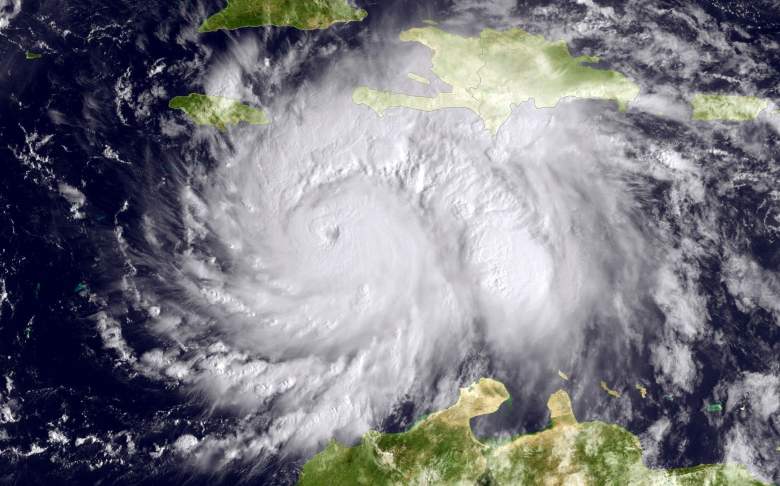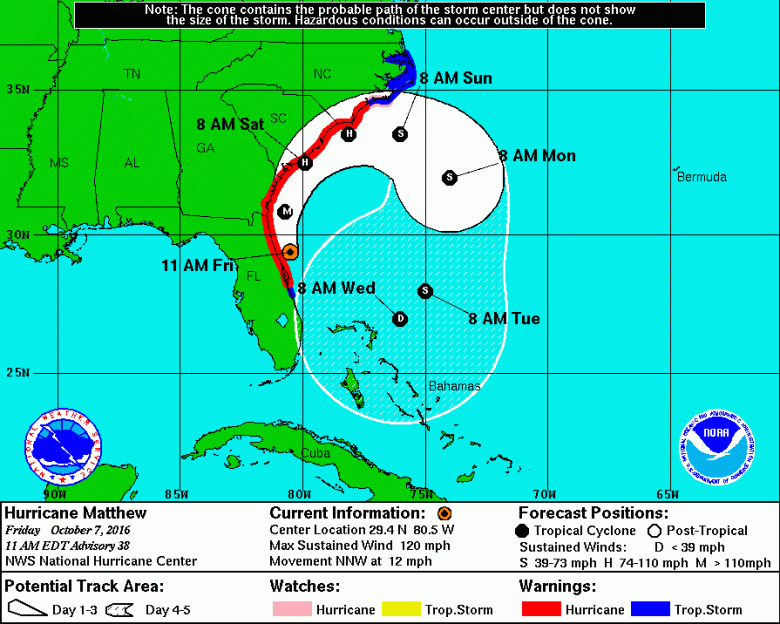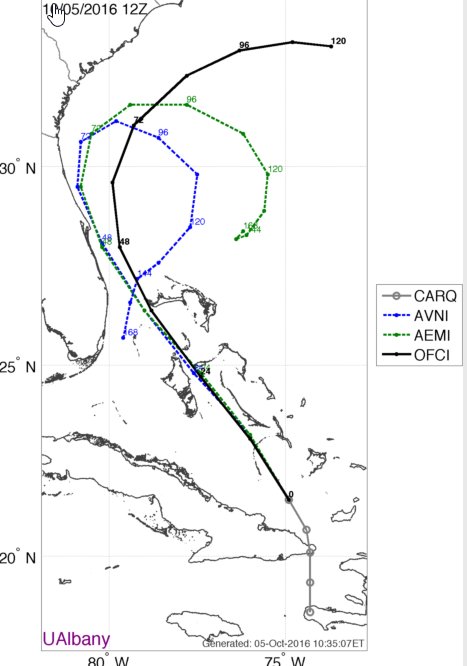
This photo shows Hurricane Matthew in the Caribbean Sea heading towards Jamacia, Haiti and Cuba on October 3, 2016. Now some predictions show it might make a loop back to Florida next week. (Getty)
Hurricane Matthew is making its way up the Florida coast, and it’s looking like it might get pushed back out to sea on Saturday. (These can change frequently, so see our path/landfall post for updates.) But that might not be the end of the storm. Since the hurricane first started approach the U.S. coast, some models seem to show the storm might hit Florida, then go back out into the Atlantic, make a loop, and go back to Florida next week. Is this possible?
Here’s what you need to know.
Most forecast models showed that Matthew could make landfall in Florida on Friday afternoon or just stay along the coast, and then move north off the coast of South Carolina, North Carolina, and Georgia. However, some models are indicating that after that, it might go into the Atlantic, turn south and west, and then possibly make landfall in Florida again next week, WWLTV reported. A low pressure area over the Midwest that could push a strong high pressure area into the northeast might create this scenario, according to WWLTV.
Here’s the latest 5-day cone from NOAA, which illustrates this could still be a possibility:
Here’s meteorologist Paul Dellegatto’s showing what this loop would look like, earlier this week. He was one of the first to really focus on the possibility:
Looping is just one of many possible paths that Matthew might take, The Washington Post reported. The hurricane’s path after it goes up the coast is still very uncertain.
However, loops are still showing up in some models, so it’s best not to dismiss the possibility yet:
Looping has happened before. In 2004, Hurricane Ivan landed on Gulf Shores, Alabama, moved into the Carolinas, then into the Atlantic, and then curved down and made a second landfall in Norther Florida. It then entered the Gulf of Mexico and made a third landfall in Lake Charles, Louisiana. Hurricane Ginger in 1971, Ginny in 1963, and Edna in 1953 also had looping paths, and Hurricane Easy in 1950 did hit Florida twice.
Right now, despite rumors that Hurricane Matthew might curve back and then land in the Gulf of Mexico, models aren’t showing this as a major concern.
Remember, hurricanes can be very hard to predict. So keep an eye on the storm’s path and don’t assume anything. Just stay informed.

